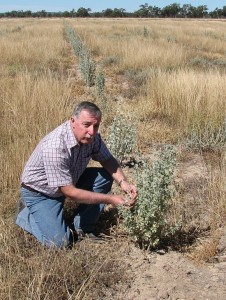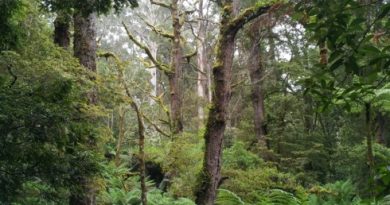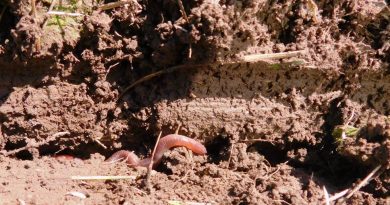Soil carbon is not all the same
By Alan Lauder
Given that the bulk of the “improvement” in production comes from increasing labile (short term) soil carbon versus long term soil carbon, it is unlikely that the importance of this reality is going to resonate with many farmers while the focus in so many processes remains mainly on long term carbon.
This is not to suggest that long term soil carbon is not important, just that with better management it is still slow to increase and this is why it’s contribution to improvements in production are marginal in the short term. Some soils naturally have higher long term carbon levels than others but this is a separate issue.

The term “soil organic carbon” (SOC) is used very loosely at times, especially by some focused only on the long term tradable carbon. SOC can be analysed and quantified in total or in its components as figure 1 shows. It is important for farmers to understand the differences involved if they are to make a positive impact on the levels of the different types in their paddock soil. One particular scientist was probably referring to increasing non-labile (long term) soil carbon when he wrote, “Remember that you need to grow a hell of a lot of EXTRA crop/pasture OM to raise the OC levels”. His interest in carbon flows only related to what percentage of the carbon flows ended up in long term carbon (stabilised organic matter), not how ongoing carbon flows influenced the labile (active fraction organic matter) pool so important for production.
Recently Jeff Baldock of the CSIRO was quoted in the media as saying, “So far, he said, little work has been done that allows scientists to predict how improving soil carbon levels will affect productivity”. Has he made this comment simply because the main focus has been on long term carbon stocks due to carbon trading and National Carbon Accounts?
For those interested in a better understanding the influence of labile carbon on production, an area worth investigating is water extractable organic carbon (WOEC) in conjunction with water extractable organic nitrogen (WEON). It would appear that these two combined is a better measure of nitrogen mineralization or immobilization than soil organic carbon (SOC) and total organic nitrogen (TON).
Understanding the past’s influence on the current debate
Before the opening of the debate on climate change, carbon was not given the priority it is now when discussing land management. I know from personal experience that the word carbon was not mentioned to me once by extension processes during the thirty years I operated a rural operation prior to leaving in 2000. Organic matter was discussed but it was not explained in the context of being carbon.
Reductionist science is probably the reason for landscape carbon processes never being given the priority they should be, especially in the past. This is why educational processes are still adapting. Knowing the background explains why a lot of people still struggle with carbon and what to associate it with, for example plant absorption of carbon dioxide (CO2) in photosynthesis. So it is no surprise that exactly what carbon does in the soil, how it does what it, and the number of different forms it takes, is still not clear to many farmers.
A farmer’s day job is managing carbon flows i.e. recycling carbon dioxide and in the process turning a percentage of the flows into saleable carbon products like grain, meat, fibre or hay. All else being equal, the higher the level of carbon flows the higher the level of production and the better the soil is maintained to support future production.
A farmer sells something that has lived and all life relies on the “ongoing” flow of carbon through the landscape. Without the ongoing flow of carbon and all the compounds it forms as it moves, the landscape would become bare and lifeless. Without carbon flows there would be no available energy or the main building block of life, which is carbon (soil carbon supplies both for what lives in the soil).
While it is critical to discuss and understand the soil carbon component of the carbon recycling process, it is important that we do not limit the discussion of carbon flows to just the soil. Carbon also flows above ground. It is above ground that carbon is initially captured through photosynthesis, with some flowing below ground immediately and more getting into the soil later via litter.
In the case of grazing, this is why animal management is central to soil carbon outcomes. Remembering that grass is about 45% carbon when dried, how livestock grazing is managed is critical for carbon flows. The percentage of ground cover consumed by animals influences the amount of litter joining the soil carbon flows. While the need to maintain ground cover has long been promoted with animal management, discussion usually focuses more on a safe consumption level with inadequate emphasis given to the carbon flows aspect which sets the level of ground cover prior to consumption.
Water use efficiency (WUE) is a measure of how successfully pastures or crops convert available water into carbon compounds i.e. the level of carbon flows achieved from a given amount of water. While it is a measure of above ground production, it is also a reflection of how much carbon flows into the soil.
There is a strong case for shifting emphasis onto “carbon flows”, rather than concentrating on increasing non-labile soil carbon. Here are some of the reasons why:
- The natural world can’t function without carbon flows
- All else being equal, the paddock with the highest carbon flows through it will be the most productive. The term “through it” is used because introduced carbon keeps leaving the paddock and returning to the atmosphere as CO2 through respiration.
- Two paddocks can have equal long term carbon stocks but it is the one that has the most carbon flowing through it that will have the highest level of production – a bit like capital versus cash flows
- The importance of carbon flows is that they organise so many important processes that occur in the paddock
- Understanding carbon flows integrates knowledge across all disciplines i.e. overcomes reductionist science
- Forms the link between science and productivity i.e. explains why production is not as high as it could be in many cases
- The foundation of healthy, productive and resilient paddocks is ensuring that there are adequate carbon flows over time. Given that 75 – 80% of labile carbon introduced into the soil can be gone within twelve months ( the actual time depends on moisture and temperature), some within a day, it is easy to run short of this commodity that is setting the level of life above and below ground. Marginal years supply fewer opportunities for carbon to flow in, which is why producers not focused on the importance of carbon flows, always suffer a much higher reduction in production in marginal years than they should. Observing what happens above ground, they have much lower water use efficiency (WUE) with what water does arrive
- Improving carbon flows reduces the effect of drought (landscape resilience relies on adequate carbon flows over time, not just long term carbon)
- Improving carbon flows increases water infiltration (especially important in marginal years)
- It focuses the debate on causes instead of symptoms e.g. puts the discussion on ground cover into better perspective. Ground cover is 45% carbon (on a dry basis) so the level of groundcover is initially determined by the level of carbon flows. The level of consumption of ground cover by livestock is the secondary management decision. Stocking rate is not the only consideration
- It is when producers understand the concept of carbon flows that current extension becomes easier to understand i.e. it is following the path of carbon that makes it easier to understand how the landscape functions
- The level of carbon flows is an indication of how much activity is actually occurring in the system
- It is important to understand that carbon keeps changing to different compounds as it keeps moving through the soil food web.
- The percentage of current carbon flows released above ground for livestock to consume is influenced by previous management of carbon flows
- To better understand carbon in the big picture, it is useful to consider carbon stocks and carbon flows as related, but separate debates. It is the emphasis on the Kyoto process that has kept the emphasis on long term carbon stocks instead of carbon flows which are short term carbon stocks
- Carbon flows are much more influenced by management than long term carbon stocks
- It is only when producers are made aware of the importance of better managing carbon flows for higher production and better environmental outcomes, that they consider changing away from the management practices that reduce the flow of carbon in i.e. implement management practices that maximise carbon flows. Spreading knowledge is the key to changing attitudes because people need to understand and see the logic before they are prepared to change
- Better management of carbon flows reduces methane emissions per kg of production by ruminant animals
- Better management of carbon flows improves water quality in rivers, estuaries and finally the Great Barrier Reef
- Carbon flows in are part of a feedback system. Carbon flows over the previous 12 months influences the level of photosynthesis when rain arrives, especially in marginal years
- The system functions in such a way that the bulk of the carbon flows in after rain. It is water/moisture that activates photosynthesis which is responsible for introducing carbon from the atmosphere to the paddock/landscape to form all the important carbon compounds that a healthy and productive landscape relies on
- Removing animals from pastures for 4-6 weeks after rain will greatly increase the flow of carbon in, especially after dry spells. This is the Carbon Grazing principle which is about maximising carbon flows by allowing plants to photosynthesize to their maximum in the short period after rain. Research suggests that ground cover can be increased by up to 80% from short term pasture rest versus leaving animals in the paddock after rain
- Locking up paddocks for long periods of time is no guarantee that carbon will flow in (it may not rain over the period). Removing animals after rain to increase carbon flows in, highlights why true pasture rest is TIMING and NOT TIME. Pasture rest should be seen as an exercise to increase SHORT TERM (labile) carbon stocks in the paddock, both above and below ground. The focus should be on adding labile carbon to the system with the understanding that a very small percentage of this labile carbon could become long term carbon to both increase these long term stocks and replace some of the long term carbon that is oxidising
- Calling pasture rest TIMING and NOT TIME is not an attack on cell grazers who lock up cells for up to 120 days. They are applying the Carbon Grazing principle because when the rain does arrive, most of the cells do not have animals in them to restrict the flow of carbon in. We should not focus on what is the best management system as everybody’s circumstances are different. It is not important how the application of the Carbon Grazing principle is achieved, the point is that it should be applied at least once every year. Obviously the more times the better. In low rainfall areas, a higher price is paid for missing opportunities to rest pastures after rain.
- The practical aspect of seeing pasture rest as TIMING instead of TIME, is that an alternative home for the animals only has to be found for a short period of time. There are ways of resting pastures without selling animals
- When comparisons are made between different management systems, it is probably not investigating the management of carbon flows in marginal years that has led to unexpected results. Plants and soil life interact differently in marginal years and this influences carbon balances.
- What follows carbon? Energy, nutrients and water – the basis of all life and rural production
- Soil tests are only reliable for long term carbon. They do not measure some of the labile carbon present that is critical to future carbon flows
- Maybe for pure scientists, we should call ground cover what it is – above ground organic matter. It is labile carbon. It is part of the total carbon pool in the paddock. It is short term carbon which is why we run short of it when it has not rained for a while. Not only is the carbon debate in many cases being limited to long term carbon but it is also being limited to discussing below ground carbon (soil carbon). It is carbon flows that supply the above and below ground carbon pools. This suggests that there should be more focus on discussing when the bulk of the carbon arrives for the purpose of improving land management.
- Carbon flows are the cornerstone of profit, landscape resilience (critical for reducing the effect of drought and floods) and better environmental outcomes including the atmosphere. Better managing carbon flows is critical to dealing with our very variable climate which seems to be getting even more variable.
To view pictures of how a degraded and completely unproductive paddock returned to full production following management changes to reintroduce carbon flows, go to http://www.beefcentral.com/p/news/article/2306 then go to http://www.beefcentral.com/p/news/article/2308 for further discussion on carbon stocks and carbon flows. I gave Rory and Kathy Frost free seedlings and free use of a planting machine to conduct this project after they were refused funding because it was felt there would be no positive environmental outcomes.




